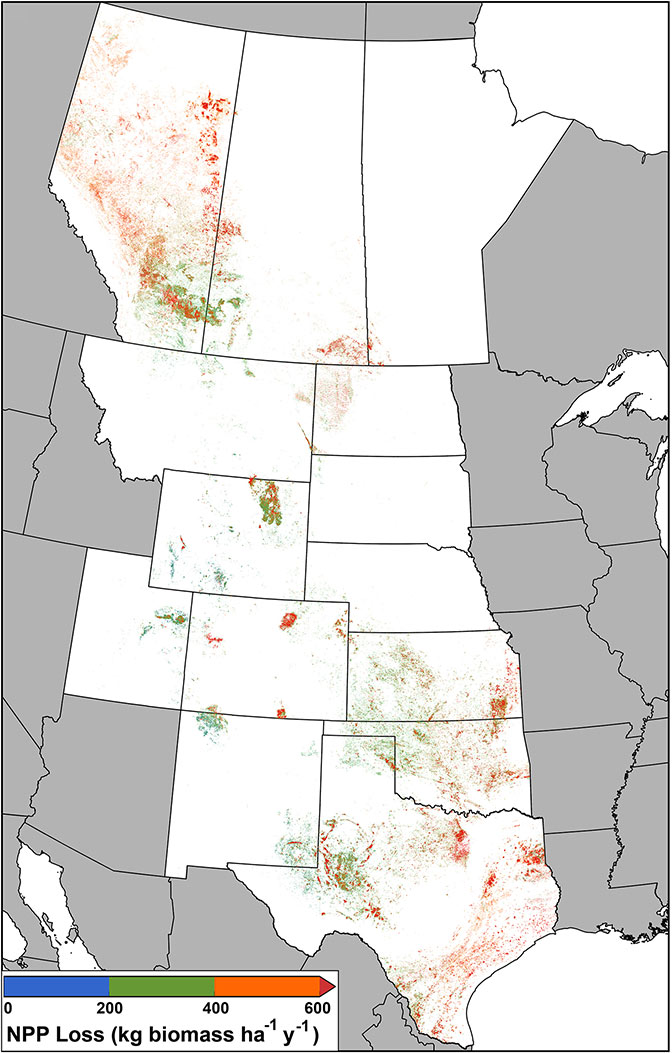Oilgas in USA. Thirty thousand square kilometers of land lost to oil and gas development

STUDY. All across North America, patches of land are being taken over by the rigs, roads, and storage facilities of thousands of oil and gas drilling operations. Now, for the first time, a study tallies up the land area they consume: 30,000 square kilometers—an area equivalent to three Yellowstone National Parks.
“For all intents and purposes, these are parking lots,” says Brady Allred, an ecologist at the University of Montana, Missoula, who led the study, published online today in Science. “The question is: How long are they going to stay this way?”
The authors acknowledge that there are benefits from the operations—namely, energy—and also that the lost land is a small fraction of North America’s total area. But they say the well sites are rarely remediated and replanted, and so the cumulative impact could begin to take its toll through the degradation of animal habitats and the loss of plants, which sop up carbon dioxide.
The study is a mash-up of two types of data. Allred paid tens of thousands of dollars to private sources and state regulators to get the location of well sites. The researchers found that, since 1900, more than 2 million wells have been drilled, and most of that has happened in two spurts—one beginning in the mid-1970s with the OPEC oil embargo, and the other beginning in 2000 with the advent of directional drilling, hydraulic fracturing, and other techniques that make it easier to extract oil and gas from tight rock formations. In the last decade, they found, industry has been sinking more than 50,000 wells a year. “Whenever we tell people there are 50,000 wells being drilled per year, they think we’re crazy,” says co-author Steven Running, a University of Montana ecologist. “Nobody has any idea of the magnitude of this.”

Industry has drilled more than 2 million wells since 1900. The displaced productivity of well sites amid croplands (red) is higher than those in rangelands (green).
The researchers combined the well locations with satellite imagery to arrive at estimates of the plant productivity lost when the dirt and gravel of a graded site replaces cropland or rangeland. The amount of lost biomass in croplands alone is equivalent to 120 million bushels of wheat, or 13% of what the United States exported in 2013, the team reports. Andthe collective toll of drilling from 2000 to 2012 means that the landscape has lost the ability to soak up 4.5 teragrams of carbon per year. That number pales in comparison to the 1000 teragrams of carbon per year taken up across the entire study area in croplands and rangelands, Allred acknowledges. But Running points out that the impact of drilling extends beyond the numbers, especially for animals such as sagebrush grouse or mule deer. “They get a sense of the human presence,” he says. “There’s a substantial disruption that’s more than just the well pad itself.”
Some researchers say the landscape impacts of oil and gas drilling are far from unique. Jeremy Weber, a natural resource economist at the University of Pittsburgh in Pennsylvania, says the situation is not so different from farmers selling land to developers for housing tracts. “I would see it as equivalent to suburban sprawl—gobbling up farmland and turning it into housing developments.”
And Katie Brown, a spokeswoman for Energy In Depth, an outreach organization in Washington, D.C., sponsored by the oil industry, points out in a statement that renewable energy sources also take up space. “Any type of energy development, whether it’s a natural gas well or a wind farm, is going to have some kind of ecological footprint,” she says. With the directional drilling that is now in vogue, the size of well operations can shrink, too, she adds. “Companies are now drilling multiple wells on a single well pad, and these are wells that can stretch miles underground, greatly reducing the surface land footprint.”
Allred would like to see more stringent standards for remediation of well sites after drilling is completed. That is already happening in some regions. In Pennsylvania, for instance, regulators require that drillers set aside and save topsoil, return the drill site to its original contours, and reseed it.
In the meantime, he’s just glad he can finally affix a number to the collective area associated with oil and gas development in the heartland. “We all use energy and there are tradeoffs,” he says. “But we need to quantify these tradeoffs.” (Science)










